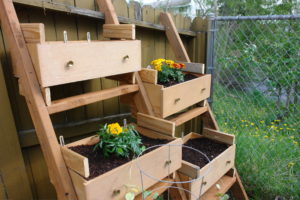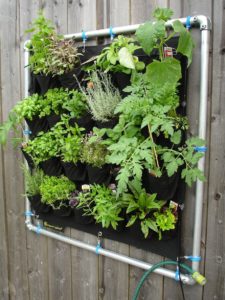How to Create Accessible Gardens

The sun and garden are calling, but there are some stumbling blocks in the way. Even when we’re willing and ready to garden, we’re not always able. The plant beds may be too high, or the garden may be impossible to access, especially for those who use a wheelchair.
Not to worry. As with other challenges of senior life, there are plenty of cost-effective solutions. Much like planning your home, your garden, too, can be adjusted. All it takes is a little planning.
Plant in Raised Beds or Containers

If you’re in a wheelchair or can’t kneel, raised beds and containers solve the problem by bringing the garden up to you. Table-top beds, which stand on legs, or beds that are widest at the top, allow wheelchair access. For more mobile gardeners who have trouble leaning over while standing, plank benches next to a raised bed can make beloved tasks easy. Container gardens allow you to place your plantings wherever you choose. Raised beds are a great option for any gardener. Compared to conventional gardens, they have fewer weeds and pests, better drainage, healthier soil, and they look great.
Re-Evaluate Your Landscape Choices
A noted gardener in my neck of the woods, one of those awesome women who could host a garden tour in a twinkling, converted her display of perennial borders to one with more native shrubs and trees. Her reason: It was getting time to do less work. It helps if you also choose native trees that require less maintenance than non-native plantings. Natives also offer the advantage of attracting colorful butterflies and birds.
Install Irrigation
Dragging a hose through the yard or lugging a watering can is hard enough for any gardener. Placing a soaking hose or drip system in your planting beds eliminates a daunting task. You can install these inconspicuous systems along a wheelchair pathway or other garden path. You can also program them to conserve water. And since they aren’t perfect, you still get to water a little corner now and then.
Choose Adaptive Tools

Adaptive tools have been my solution — and the tools I needed were right there in the shed. These include a long-handled swoe that allows me to weed without bending over. A swoe, in case you haven’t used one, looks like someone took a golf club and sharpened its edges. I found an equally long-handled lopper designed for tree work that works just fine on saplings and invasive vines. Even more important? An 18-inch high rolling bench I can sit on when I have to get close to the ground. To these, I’ve added a pair of short, industrial-style carpal tunnel braces. They’re no good for delicate movements at my laptop but are perfect for tasks outside. Yes, specialized adaptive tools abound. Adaptive handles can reduce the stress of holding the conventional tools you currently own. And there’s a huge variety of ergonomic tools designed for those with arthritis to reduce the difficulty of pruning, digging, and other garden tasks.
Go Vertical

Growing up instead of out allows you to harvest vegetables or flowers without having to bend and kneel. It’s easy to build a frame to attach to a wall or a freestanding trellis that you can access from a garden or wheelchair pathway. Vertical gardens also need less weeding and suffer fewer pest and disease problems.
The secret to a long life of gardening is adjusting to the times and getting wonderful results. Adopting accessible techniques is part of this great tradition that can allow you and your garden to flourish for seasons to come.
Authored by: Frances Black
AUTHOR BIO: Frances Black is an environmental journalist whose home is filled with native plants and flowers. When she’s not tending to her indoor plants, you’ll find her in her vegetable garden, whose bounty she doesn’t mind sharing with the local wildlife.